My Projects
These are all of my significant projects that I've worked on in the past
several years. I started working on personal projects roughly the same time
I began to learn to code. It was one of the best ways I learned and kept
familiar with the new languages I was learning. All of my projects, test
programs, etc. are available on
this complete
list. This page has what I consider to be my most relevant and significant
projects, sorted in descending order by date. My favorite and most successful being the ones listed below:
Personal Website
2019-2020
This website is my most recent 'finished' project. I began working on iterations of this site
in early 2019. I only really ever work on it in my free time, but I have put a lot of effort into
making it work on multiple devices and platforms while still looking good. The site is meant
to act as a portfolio for my work. This way my family and future possible employers can see
the projects I've worked on.
Everything on this site I wrote myself and I am hosting it from a Raspberry Pi 4 from my home network. The site is just a basic Apache web server with a PHP backend. The design is pretty minimal but I'm really happy with how it turned out.
Everything on this site I wrote myself and I am hosting it from a Raspberry Pi 4 from my home network. The site is just a basic Apache web server with a PHP backend. The design is pretty minimal but I'm really happy with how it turned out.
UML Editor
2019-2020
This UML Editor was a project that I did for my Software Engineering course
in college in the Spring of 2020. I worked on a team with 3 other students
to develop a program that the client (our professor) wanted us to make. The
project had 3 distinct sprints; during each of these sprints we were to try and
achieve the functionality that the client wanted. Once every sprint we would
have a meeting with the client showing them our progress and receiving feedback
as to how they liked the program.
One of my proudest achievements with this project was making our GUI interface testable in a headless environment so we could use Git actions for continuous integration. I was able to make mock objects for all of the Java Swing components we used to allow our GUI code to be tested.
One of my proudest achievements with this project was making our GUI interface testable in a headless environment so we could use Git actions for continuous integration. I was able to make mock objects for all of the Java Swing components we used to allow our GUI code to be tested.
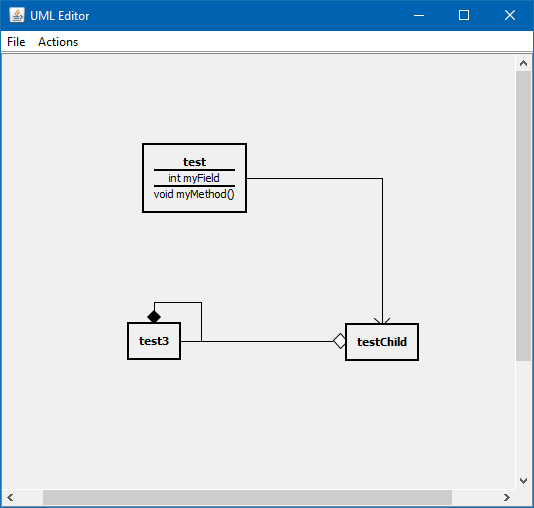
UML Editor
Tiny Shell
Spring 2020
Tiny Shell is a shell program written in C for my Operating Systems course.
The goal of the project was to learn how to manage processes and understand
signal handlers. The program allows you to execute commands, move a process to the
background and then pull it back to the foreground.
Konane
Fall 2020
Konane is essentially Hawaiian checkers. For my Artificial Intelligence course we wrote a Konane AI
to learn Python and to implement a Minimax algorithm to beat another basic AI. By the time I had taken the
course I had already written a Minimax algorithm in Java before and new the basics of Python but this was
a good project to put it all together and test my skill.
Sorts
Spring 2019
This was a project for my Data Structures course where we implemented merge sort,
quick sort, and shell sort. The program has the user enter how many elements should be
generated and then generates that many random integers. It then calls each sort function
and compares the time it took each to complete the sort. It is a fairly simple projects,
but one of my early C++ projects that I am still proud of.
We also wrote a separate program for Radix sort, that can be found on my GitHub at by going to this link.
We also wrote a separate program for Radix sort, that can be found on my GitHub at by going to this link.
Bouncy Ball
Spring 2016 - 2018
Bouncy Ball is one of my most involved projects I've ever worked on to date, and
while some of my old coding practices from a few years ago were less than great, I
am still extremely proud of this project.
Bouncy Ball started as one of my earliest Java projects after I had taken an into programming course in my sophmore year of high school. I wanted to test out my skills and see if I could replicate a seemingly simple game that I had played a lot around that time. The game I chose was of course Bouncy Ball from Raon (the link to their app on the Google Play Store can be found here).
So I began working on the game and realized that creating a completely working game from the ground up was not nearly as easy as I thought in my head. The very first versions of the game were horrible, but I was learning a lot very quickly. Each iteration took the elements I had learned from the last version and improved upon them to enhance the mechanics of the game. I was even able to make a custom level editor where users can design and test their own levels; this is something I am very proud of and took a lot of work to accomplish.
While the code has definitely aged and I would do a lot of things differently knowing what I know now, I still love this project and everything I learned from working on it. More details as to what changed in each version can be found on the Bouncy Ball Page where I also go into detail the things I was learning how to do.
Bouncy Ball started as one of my earliest Java projects after I had taken an into programming course in my sophmore year of high school. I wanted to test out my skills and see if I could replicate a seemingly simple game that I had played a lot around that time. The game I chose was of course Bouncy Ball from Raon (the link to their app on the Google Play Store can be found here).
So I began working on the game and realized that creating a completely working game from the ground up was not nearly as easy as I thought in my head. The very first versions of the game were horrible, but I was learning a lot very quickly. Each iteration took the elements I had learned from the last version and improved upon them to enhance the mechanics of the game. I was even able to make a custom level editor where users can design and test their own levels; this is something I am very proud of and took a lot of work to accomplish.
While the code has definitely aged and I would do a lot of things differently knowing what I know now, I still love this project and everything I learned from working on it. More details as to what changed in each version can be found on the Bouncy Ball Page where I also go into detail the things I was learning how to do.
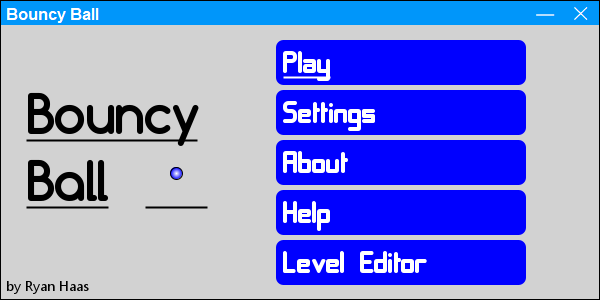
Bouncy Ball v5.0.0
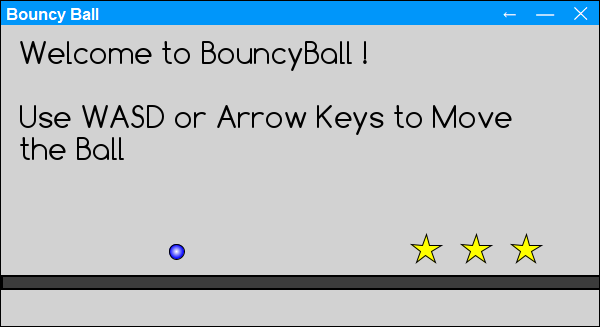
Bouncy Ball Level 1
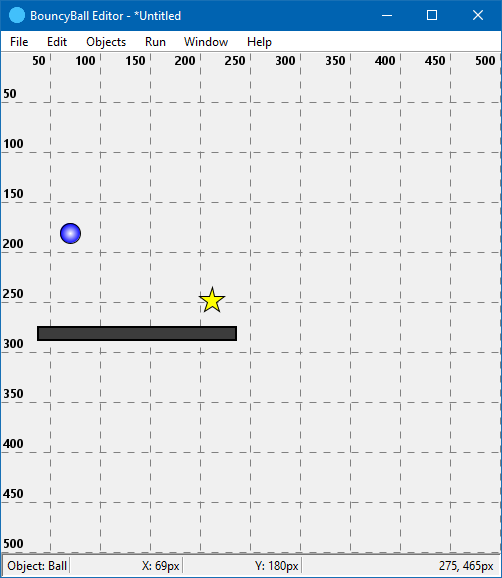
Level Editor
TBD Platformer
Spring 2018
TBD is a platformer I wrote for a seminar class in my senior year of highschool where we
got to pick the project we wanted to do. By this point in high school, I had a pretty good grasp
on Java and had already taken all of the computer science and programming related courses that
Warwick offered. However, I didn't have too much experience with using outside libraries and
figured that this would be a good class to do so. The project uses the Lightweight Java Game Library (LWJGL)
to make a basic 2D platformer with a few levels. The main libraries used are GLFW and OpenGL, something
that ended up helping me in my computer graphics class in college. I had a smooth working camera and the movement
felt really good, in my opinion. It was a fun project that looked nice and taught me how I can use other libraries.
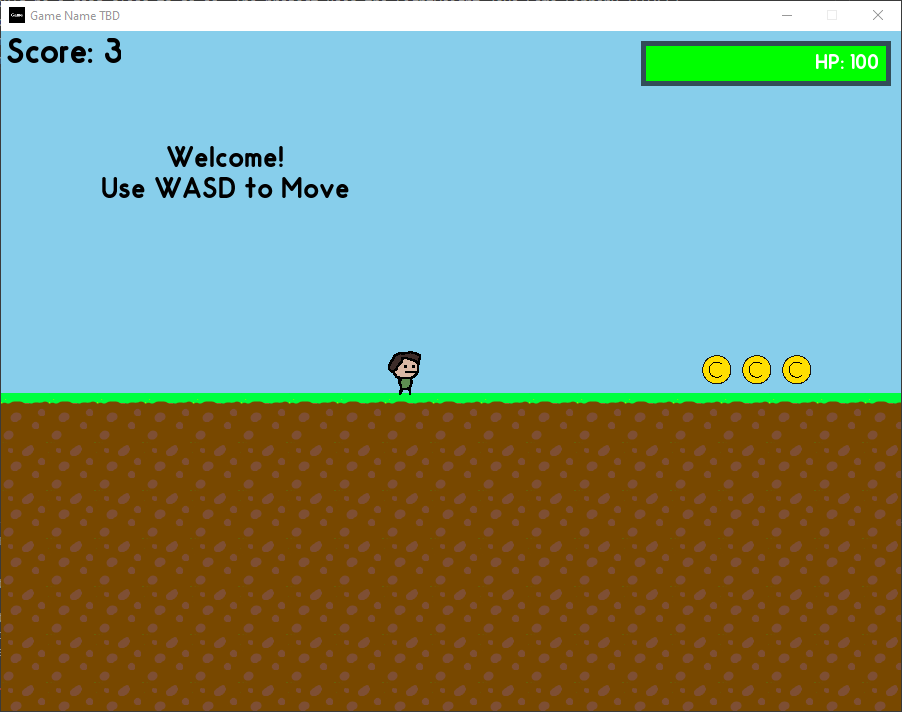
TBD Level 1
Connect 4 A.I.
Spring 2017
The Connect 4 A.I. was a bonus project for my AP Computer Science class in high school.
After the exam our teacher at the time gave us a list of things we could work on that
he would grade and I chose the Connect 4 A.I. The goal was to make an A.I. that could
beat everyone else's A.I. as well as the teacher's. After some research I discovered
the minimax algorithm and began implementing it for this game. I was able to tie for first
place (some other found the minimax algorithm as well). This was before I was in college
where I got to take an actual artificial intelligence course, so I am sure my minimax
algorithm has some problems, but I am really happy with how it turned out.
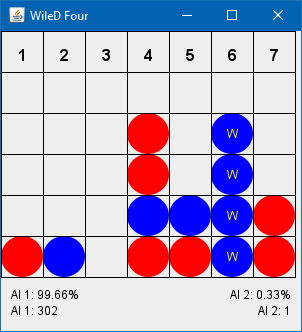
Connect 4 A.I.